(this post includes photographic advice and a musical bonus)
Officially, Perth’s November 21 2020 sunset occurred at 6.59 pm.
Effectively, on the west side of Lake Monger, the sun had set some minutes earlier, thanks to the (modest) hill/stabilised dune which rises behind the lake’s western side.
Where I took the featured image, the golden hour’s most magical moment was at 6.43 pm.
Twelve minutes earlier, only a minute’s walk away, I witnessed Little Corellas at play, almost inevitably
I say “almost inevitably” because Corellas are so often “at play”, sometimes with a little aggro thrown in, albeit usually without any “serious biffo”…and they are so often raucously present at Lake Monger.
In recent years Corellas have become an alleged “plague” at Lake Monger, and various other Perth locations which these formerly-rural cockatoos have “invaded”.
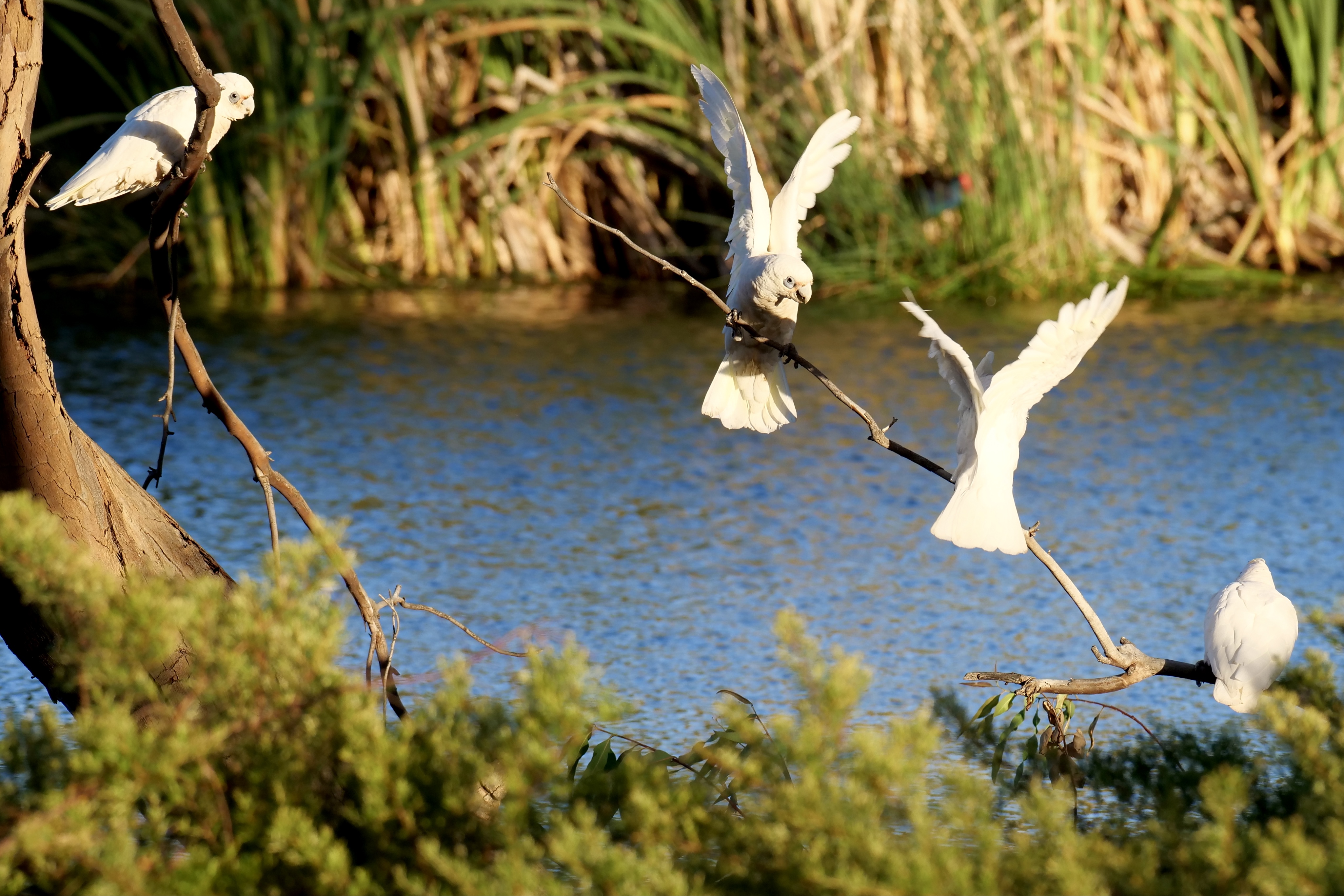
General info on this species, here.
Click this to see and hear how to distinguish it from other species – Corellas are often wrongly-identified.
The “golden hour” refers to the time of day when the sun is low on the horizon, shortly after sunrise and shortly before sunset.
Chances are that the majority of your favourite “natural light” photos were taken during the golden hour, when colours are most luscious, textures most apparent, and shadows deepest.
(And if – like me – you hate phoney, crass, unsubtle, “photoshopped to death” images, chances are that many of the ones that irritate you the most could be labelled, fairly, as “yet another misguided attempt to apply artificial golden hour glow to a pedestrian pic”)
Depending on your latitude, the local topography and the amount of cloud cover, the “golden hour” may last for a deal more or a deal less than an hour…or it may not happen at all.
The “window” shifts a little each day, even if you stay in the same place; in peak summer, near the North Pole, the “golden hour” could embrace most of the day’s 24 hours, whilst on the same day at the South Pole you would remain in darkness, throughout.
Click here for a useful photographic guide to making the most of the golden hour; it will link you to an app which will enable you to discover exactly when the “next window” may open, depending on the date and your location.
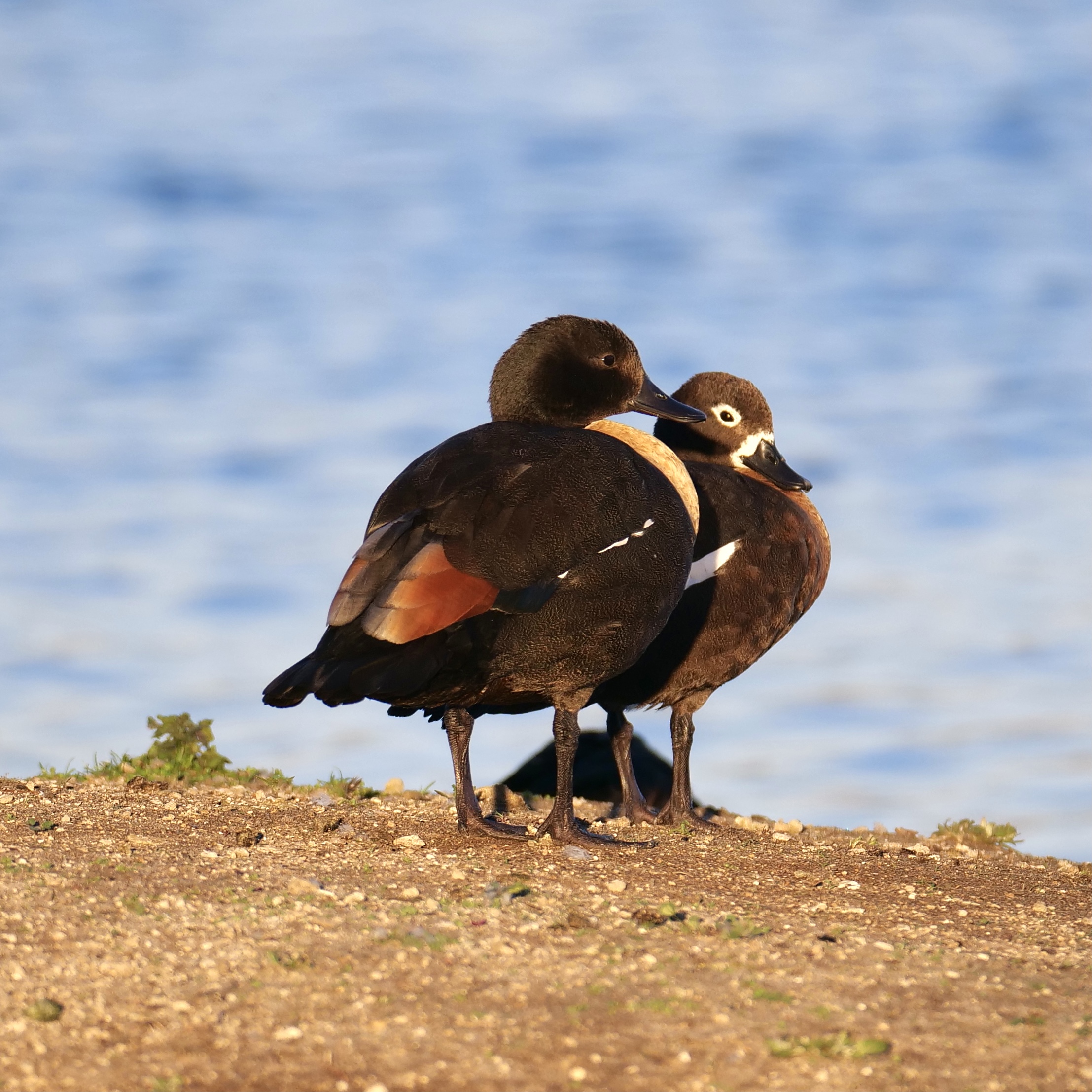
Pictured above are Australian Shelducks, as one usually sees them – in a male/female pair; an adult female has white around her eyes, and she is usually a little smaller than the male.
Bizarrely, many Australians refer to these uncommonly handsome but quite common ducks as “mountain ducks”.
They are in fact lowland ducks, widely seen across southern Australia, usually near to a fresh water wetland, lake, or river.
Through the breeding season, they are monogamous. Some pairs pair up for their entire adult lives.
Generally, if you are gazing across suitable habitat, your field of view will include no more than a handful of pairs.
However, post-breeding, when they moult, many hundreds – even thousands – of Australian Shelducks congregate at particular, favourite places where they remain – not flying, at all – for several weeks.
Lake Monger is one such place.
Over the last several weeks the Shelducks have dominated its southern shore, and the grassed verge has at times almost “disappeared” under a blanket of discarded feathers.
I overheard worried people who did not know what was happening.
They were hugely relieved to discover that packs of dogs or cats had not in fact being laying waste to the local wildfowl!
Some time between the middle of last week and Saturday 21 November, most of the Shelducks must have completed their moulting.
I’d guesstimate that circa 80 percent of the throng had flown off, thus foiling my plans for “throng, at golden hour”.
Within a day or two, I suspect, Lake Monger will once again be home to just a few pairs of Australian Shelducks.
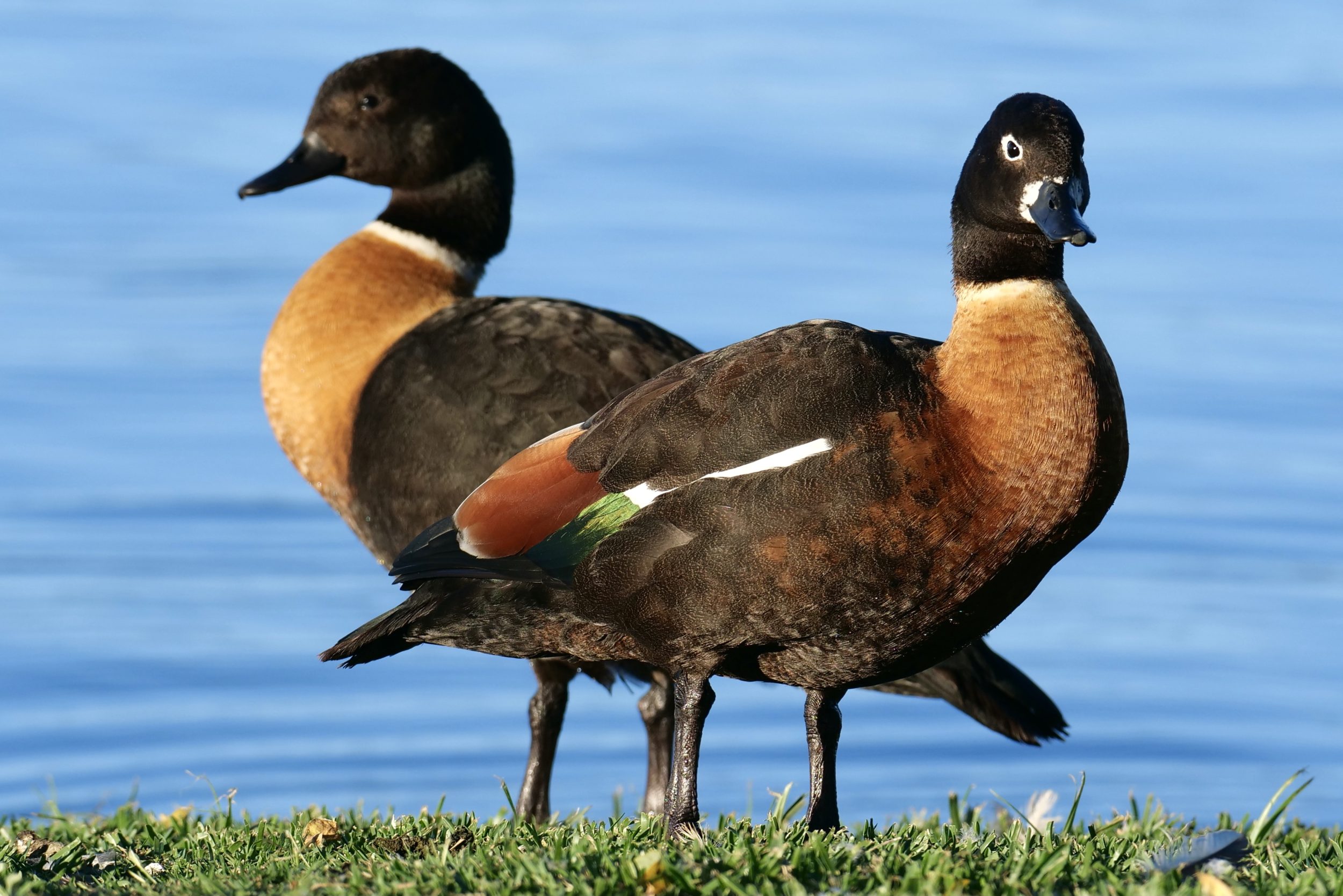
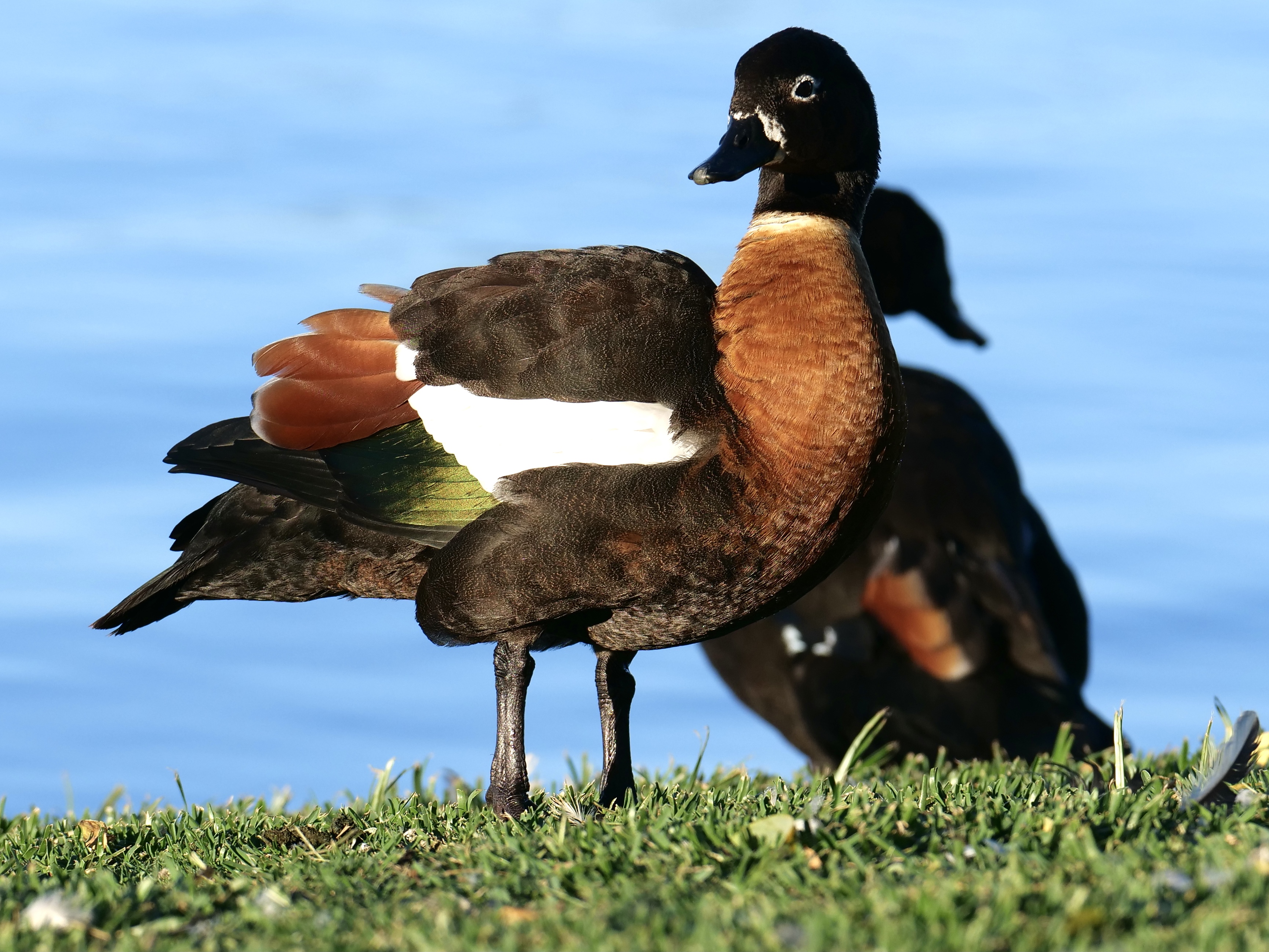
Zoom in/enlarge to see just how exquisite is their plumage.
In 1972 British (long, US-resident) bassist Dave Holland recorded Conference of the Birds, his first album as band leader.
Barry Altschul was drummer-percussionist.
The quartet’s reed and woodwind players – together, on disc, for the only time, ever – were Sam Rivers and Anthony Braxton.
At the time, Holland was living in Amsterdam; the album’s titlepiece was inspired by the birds outside his apartment…and perhaps also by a Persian Sufi poem/fable.
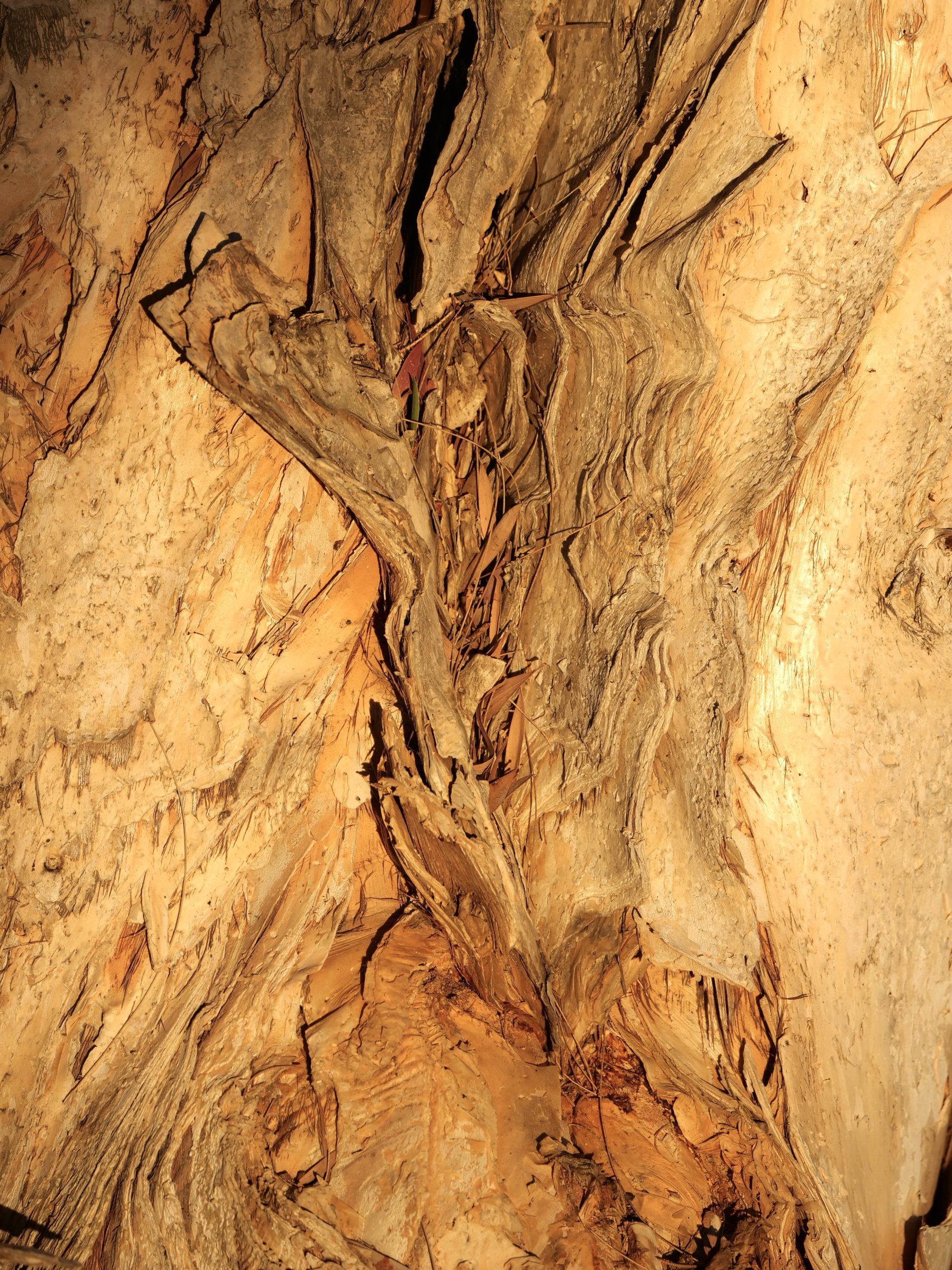
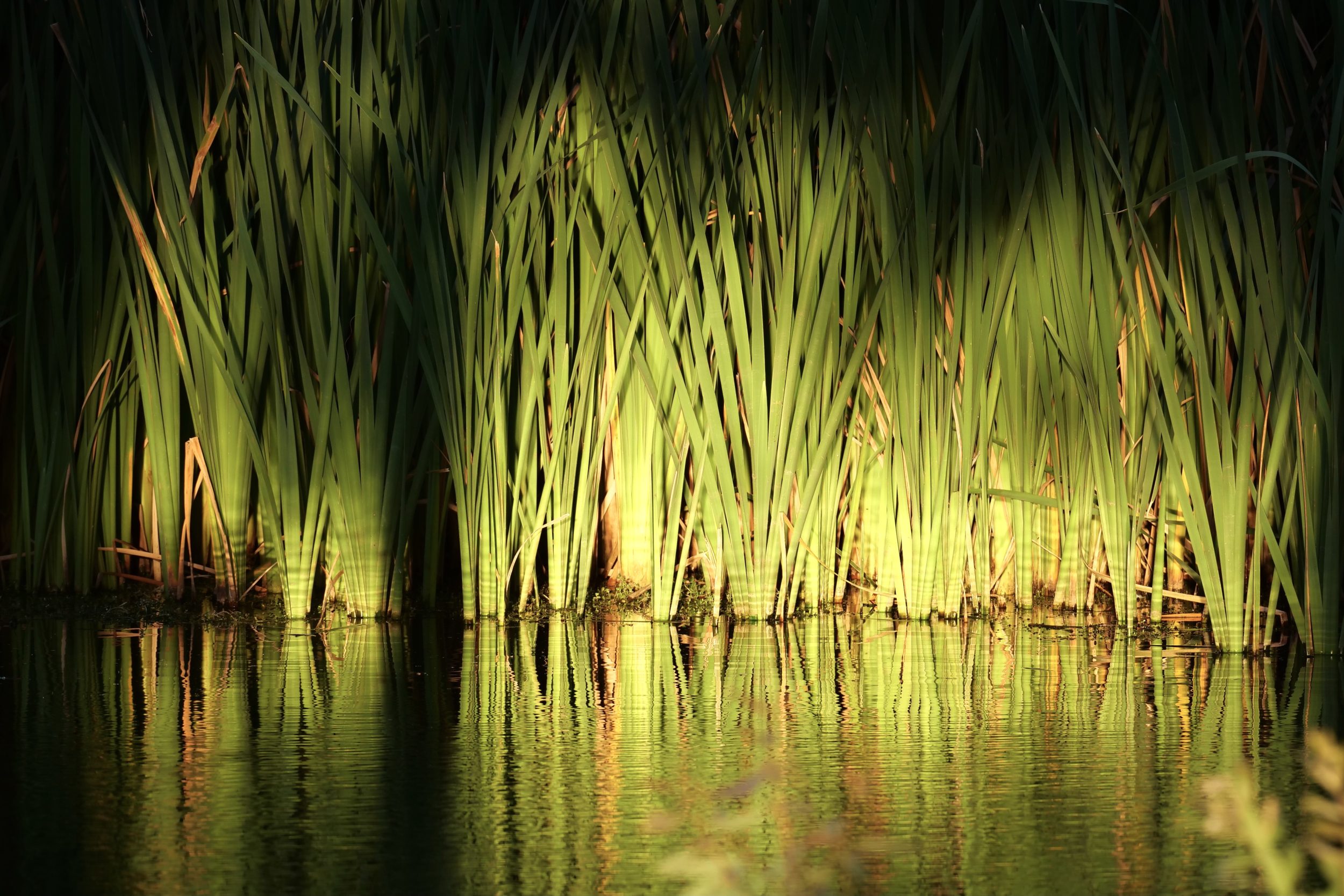
[…] “Golden Hour” at Lake Monger […]